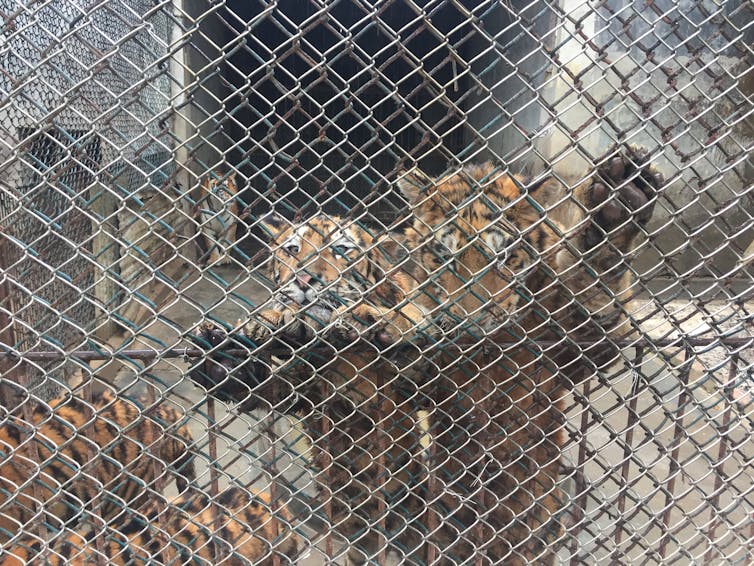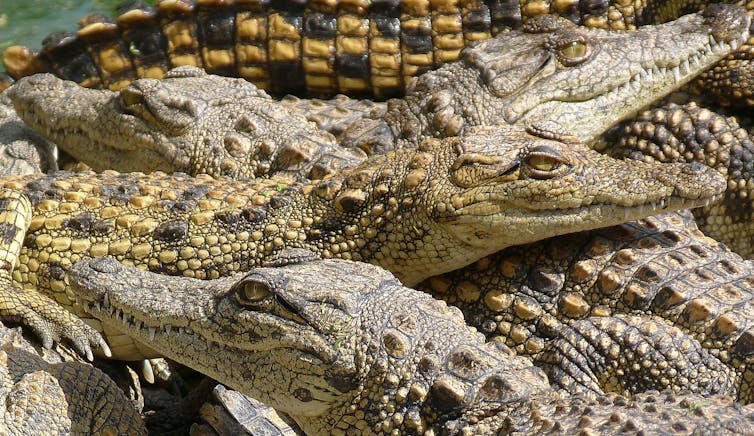Lions poaching
Comment: lion and tiger farming may not be cause of increased poaching
Published on: 9 July 2019
Writing for The Conversation, Amy Hinsley and Niki Rust argue that there is insufficient data to prove that poaching has increased because of inhumane farming operations.

It is never pleasant to see wild animals caged and abused. A new report by the NGO World Animal Protection suggests that captive-breeding operations for lions and tigers have expanded to meet an increasing demand for big cat products used in traditional Asian medicine. While this is clearly bad news for the captive cats themselves, confined in often horrible conditions, we are not convinced by the report’s findings on what this means for wild populations.
Animal welfare organisations often suggest that farming wild species will lead to an increased loss of animals from their natural habitats. Either this is because animals are taken from the wild to stock the farms, or because the sale of farmed products increases demand for the wild version, leading to more illegal killing (also known as “poaching”).
For instance, the new report found anecdotal evidence that wild lionesses were sometimes killed in order to capture their cubs and smuggle them into captive facilities to diversify the gene pool and reduce inbreeding problems. World Animal Protection suggests that by “sustaining demand for [big cat] products” these farming operations are “exacerbating the decline” of big cats in the wild.

However, we argue there is insufficient data to prove that overall poaching of lions or tigers has increased specifically because of these farming operations. Even if poaching has increased since farming operations have expanded, there’s not yet been a cause-effect mechanism found to prove that farming has contributed to an increase in poaching. To understand this conundrum, we would need to look at the counterfactual: with all other things being equal, what happens to overall poaching numbers when there is or is not farming?
One study that looked at the impact of South Africa’s lion farms found that the trade had negligible effects on wild lion populations. Another report found that seizures of illegal tiger parts were increasing, but attributed it to expanding tiger farm operations (so more supply flowing in the illegal trade) rather than increased poaching of wild tigers. It is also not clear if an increase in enforcement effort could partly explain this increase in seizures reported. Again, to really understand a cause-effect relationship, we need more (and better) data.
Taking the pressure off
In some instances, farming of wild animals has helped to reduce poaching. Crocodiles for instance were once regularly hunted for their hide and meat. The UN Food and Agricultural Organisation then provided assistance to set up crocodile farming operations, which took the pressure off wild populations.

There is, however, one large difference between the crocodile trade and the big cat trade: many consumers of big cat parts say they prefer wild-caught individuals, whereas purchasers of crocodile leather products prefer farmed, as you generally get better quality hides. But people who say that they prefer wild animal products may not always then go on to buy them in real life, especially if it’s easier, cheaper or more legal to buy from farms. To suggest that farming big cats increases poaching potentially is misleading without providing firm evidence that poaching of wild animals will decline without the farms.
Though some may argue for the precautionary principle (that is, ban everything then work out what the best approach is), until we know more, closing these farming operations may have the unintended consequence of actually increasing the poaching of wild animals. In examples like the lion and tiger trade where farming already exists, we must first understand and tackle demand for these products before bans are put in place, to ensure we do not accidentally increase pressure on wild animals.
It is tempting to act swiftly due to the widespread and alarming decline of biodiversity. However, we caution against rushed actions that, while well meaning, may not be based on firm evidence and could end up creating worse problems. What we really need first is better data on how captive-bred farming affects wild animal populations. The conditions for individual animals on many of these farms may be abhorrent, but if the main goal is to conserve wild species, we must act on science rather than emotion.
Niki Rust, Postdoctoral Researcher, School of Environmental Sciences, Newcastle University and Amy Hinsley, Research Fellow, Oxford Martin Programme on the Illegal Wildlife Trade, University of Oxford
This article is republished from The Conversation under a Creative Commons license. Read the original article.



